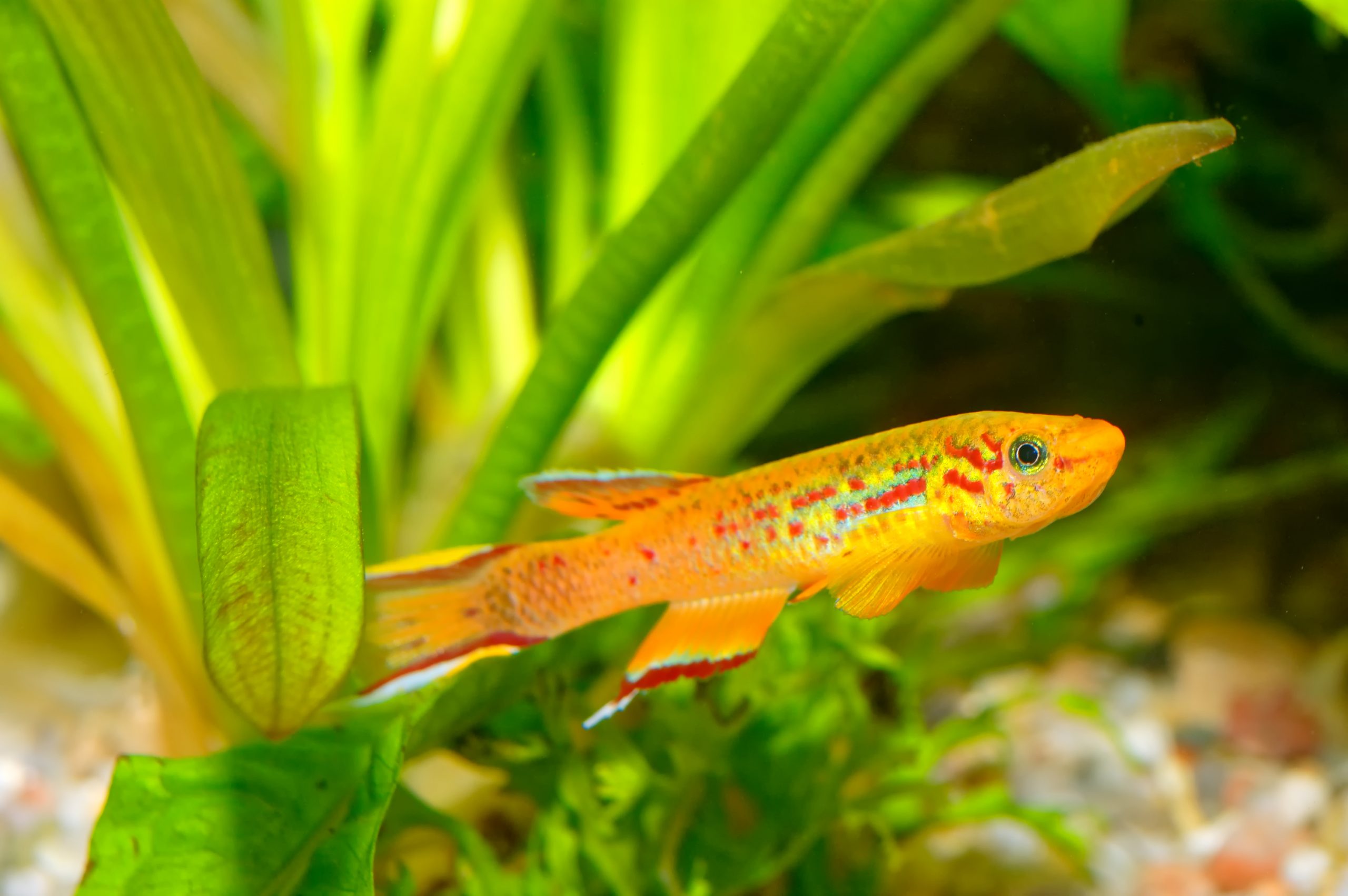Cell Protein Recycling Linked to Toxic Buildup in Brain in Early Study

Aquarium fish from genus Aphyosemion.
Lower than usual activity in a complex that recycles proteins in cells — called the proteosome — leads to an age-related buildup of protein aggregates in the brains of fish, similar to that seen in neurodegenerative diseases such as Parkinson’s, a study reported.
Low proteasome activity early in life also shortened a fish’s lifespan.
The study, “Reduced proteasome activity in the aging brain results in ribosome stoichiometry loss and aggregation,” was published in the journal Molecular Systems Biology.
Neurodegenerative diseases such as Parkinson’s are characterized by the deterioration of nerve cells (neurons). In most people with Parkinson’s, proteins accumulate in neurons and form toxic aggregates called Lewy bodies.
Protein buildup in neurons also is known to occur as a result of aging. The underlying mechanisms that trigger aggregate formation, however, remain unknown.
It is thought that a contributing factor is a breakdown in the process known as protein homeostasis — the steady production, location, and degradation of proteins in a cell, which is essential for all living organisms.
To understand how and why proteins accumulate during aging, researchers at the Leibniz Institute on Aging – Fritz Lipmann Institute in Germany, along with investigators in the U.K., Greece, Italy, and the U.S., designed a study to understand the chain of molecular events that leads to the age-associated loss of protein homeostasis in the brain.
As a model they chose the killifish (Nothobranchius furzeri), which is the shortest-lived vertebrate (3 to 12 months) bred in captivity. Given its brief lifespan, age-related processes are accelerated in this fish species, and rapid aging induces changes in the brain that mimic those typically seen in aging human brains.
A recent study using killifish also found an age-dependent formation of protein deposits containing alpha-synuclein, the protein that is the primary component of Lewy bodies associated with Parkinson’s disease.
Researchers analyzed the brains of killifish at three different ages: young sexually mature fish, adult fish without aging characteristics, and older fish that showed signs of neurodegeneration.
They used a technique called mass spectrometry to conduct a large-scale analysis of proteins, and they sequenced RNA, the molecule that carries information from DNA to make proteins.
Of the almost 9,000 protein groups that were quantified, nearly half were significantly affected by aging. Additionally, RNA levels in aging brains, which typically correspond to protein levels, no longer matched the levels of half of the proteins identified.
Decoupling of RNA and protein levels was found to occur in a critical structure within the cell known as the ribosome. Ribosomes convert the DNA message to a protein message, and are composed of several proteins along with other RNA molecules assembled in specific ratios (known as stoichiometry).
In aging brains, the ratios of these proteins were altered, and analysis of protein aggregates found an abundance of these ribosomal proteins. Rations of proteins in other complexes involved in energy production were also affected by aging.
“[T]here is a progressive loss of stoichiometry of protein complexes during aging, mainly affecting the ribosomes, which is one of the most important protein complexes in the cell, responsible for producing all other proteins,” Alessandro Ori, PhD, the study’s lead author, said in a press release.
To understand the trigger for the aggregation of ribosomal proteins, researchers focused on the proteosome — a complex within the cell that digests and recycles old and defective proteins, and is an essential component of protein homeostasis.
Similar to the altered ratios of ribosomal proteins, the ratios of proteins that form the proteosome were also affected, resulting in decreased activity. This reduction occurred early in life, and progressed during adulthood. To confirm this result, when adult fish were treated with a chemical that blocked proteasome activity in the brain, their brains showed a premature aging signature.
“Decrease of proteasome activity is an early sign of brain aging, but is it relevant for aging of the entire organism?” said Alessandro Cellerino, PhD, a study co-author. “To answer this question, we correlated individual variations in proteasome activity with individual variations in lifespan.”
By comparing gene expression in more than 150 killifish to their lifespan, researchers found that fish with a significant early decrease in proteasome production lived a considerably lesser time than did fish that maintained or increased production.
“Reduced proteasome levels are a major risk factor for early death in killifish,” the researchers wrote.
“[O]ur work identifies the maintenance of proteasome activity upon aging as being critical to ensure the correct stoichiometry of protein complexes involved in key biological functions such as protein synthesis, degradation, and energy production,” they added.
“Further detailed mechanistic studies will show whether the changes that we have described during aging contribute to a functional impairment of these protein complexes, or whether they are themselves a response to the aging process,” Ori said.






